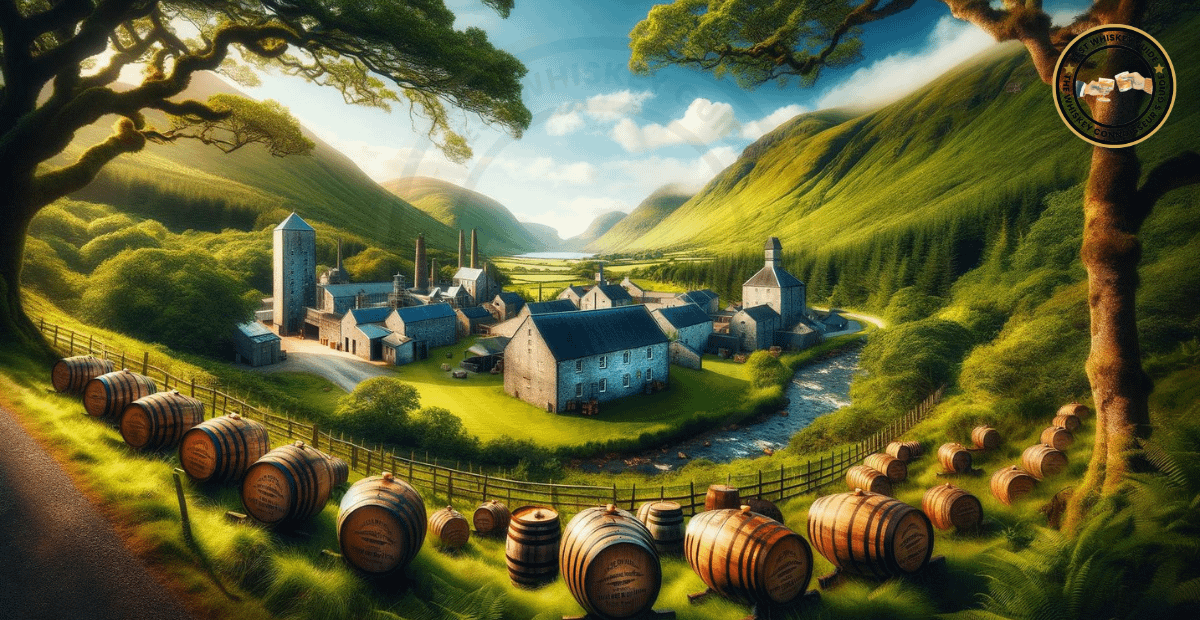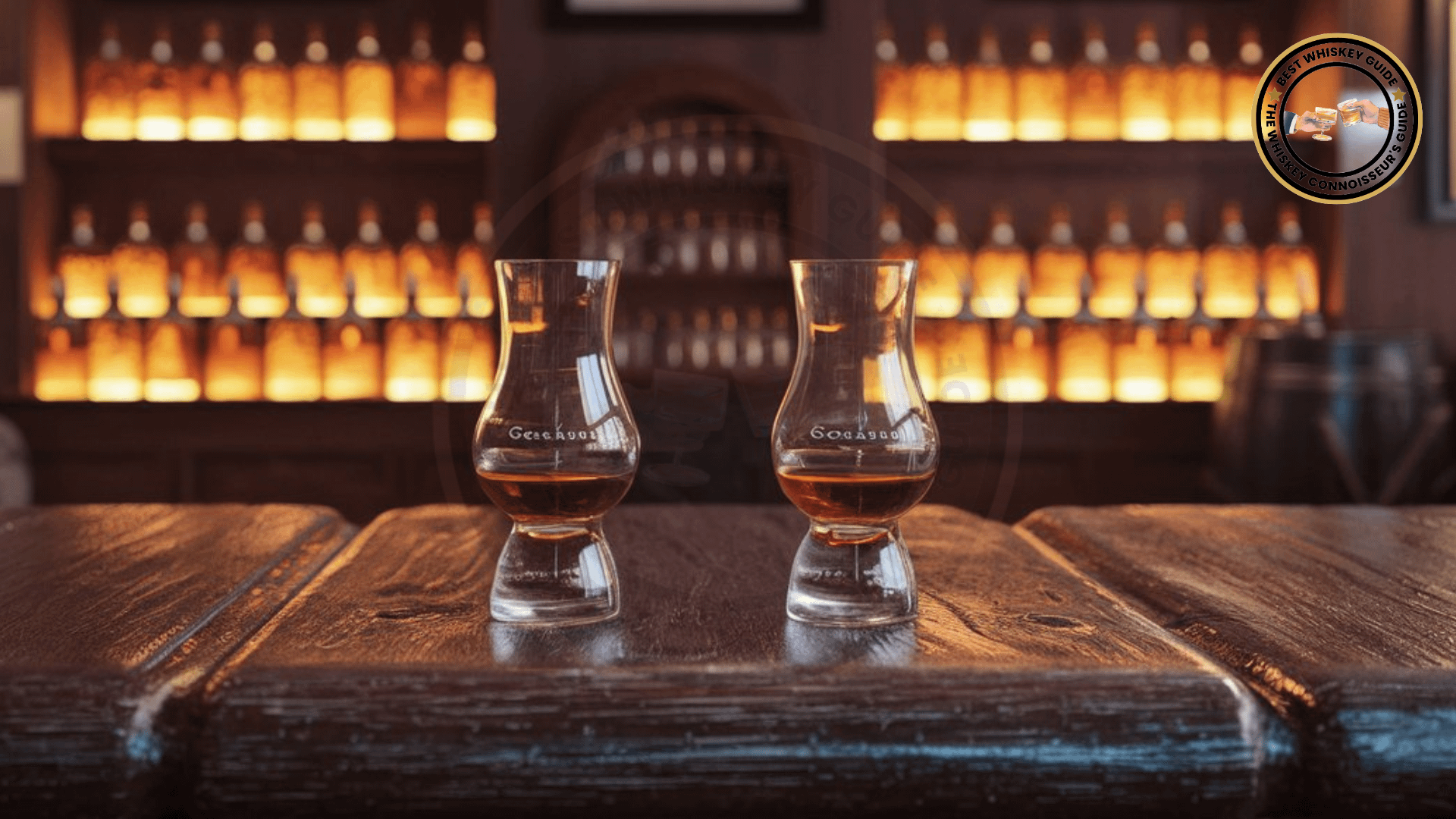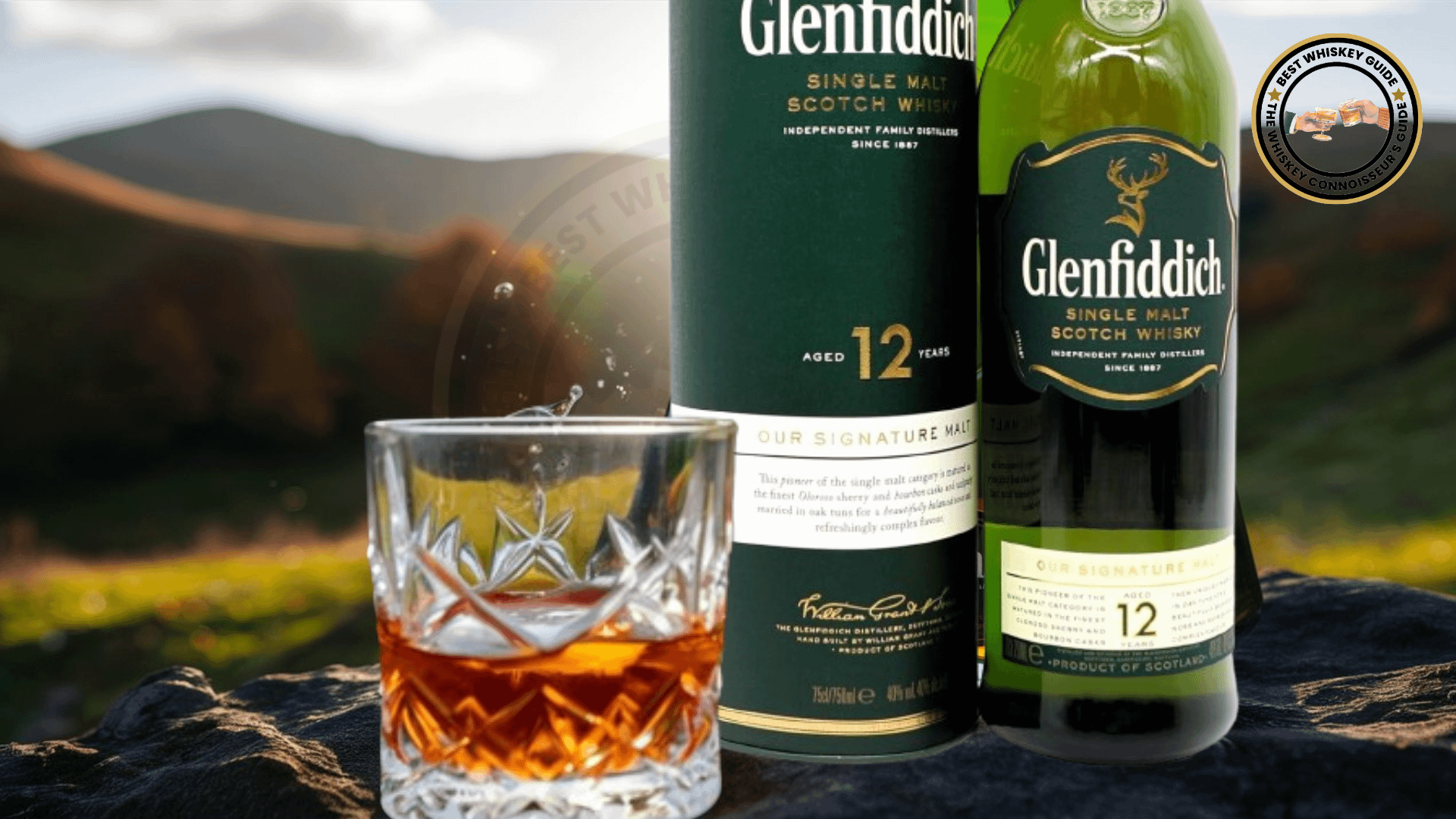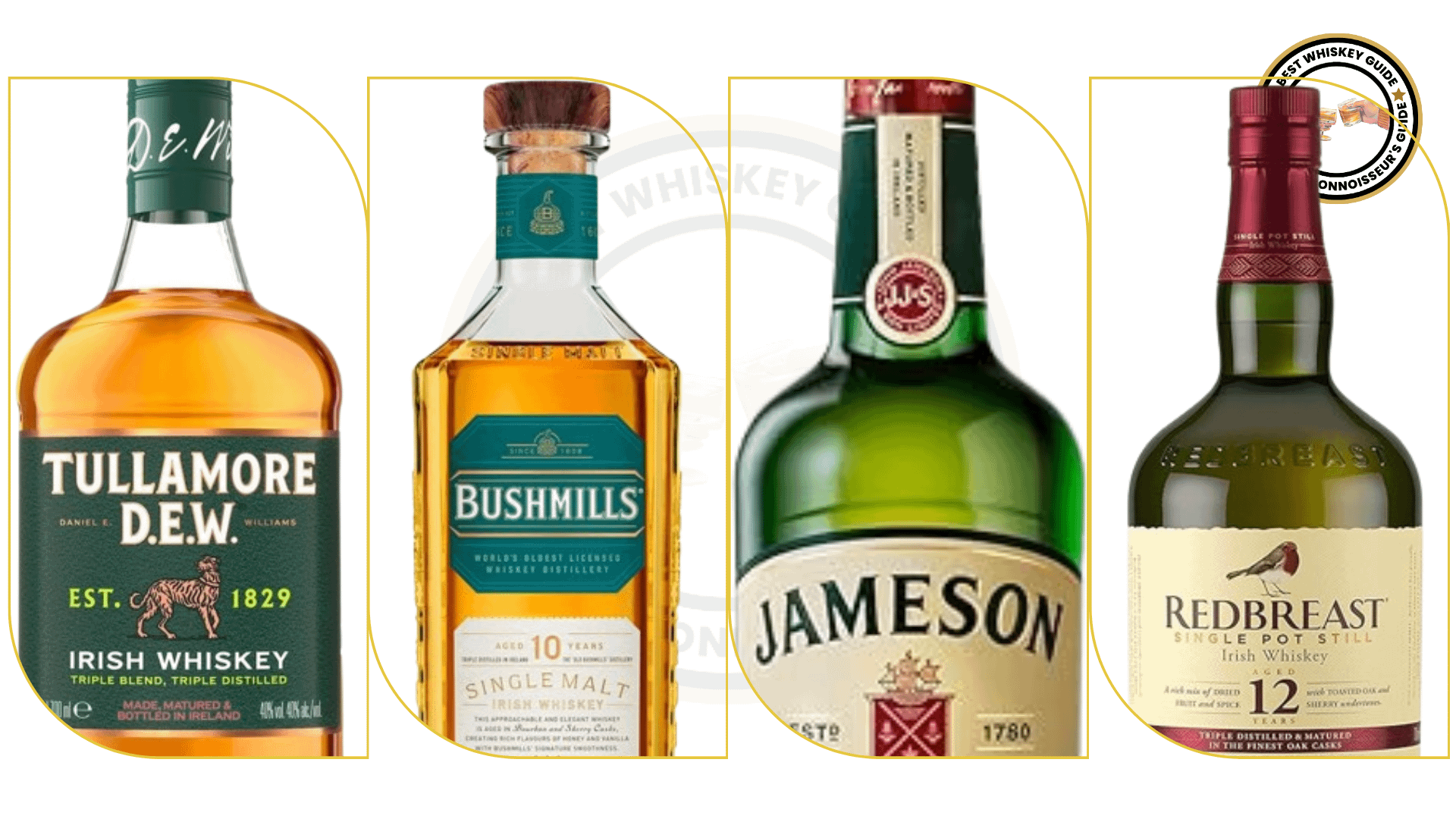How whiskey is made is a journey of craftsmanship and tradition, transforming simple ingredients into a complex and beloved spirit. This article delves into each step of the whiskey-making process, from selecting grains to the final ageing in oak casks. We explore the art and science behind creating different whiskey styles, offering insights for both connoisseurs and curious newcomers. Join us in uncovering the magic that turns grain, water, and yeast into the world’s cherished amber elixir.
How Whiskey is Made Table of Contents
Table of Contents
A Toast to the Amber Elixir: A Brief History of Whiskey
Whiskey’s origins are as rich and varied as its flavours. Emerging from ancient distilling practices, whiskey has evolved through the ages, with each region imprinting its unique signature. From the smoky Scotch of Scotland to the bold Bourbon of America, whiskey’s history is a tapestry of innovation and tradition.
Why Whiskey? Exploring the Allure and Diverse Styles
Whiskey’s allure lies in its diversity and complexity. Whether it’s the smooth, honeyed profile of Irish whiskey or the peaty depth of a Scotch single malt, each style offers a unique tasting experience. Understanding these styles is key to appreciating whiskey’s rich tapestry.
Demystifying the Process: A Roadmap to Your Whiskey Knowledge
The whiskey-making process is both an art and a science. In this section, we’ll demystify the steps involved, from selecting grains to the final ageing process, providing a comprehensive roadmap to deepen your whiskey knowledge.
The Heart of the Spirit: The Ingredients of Great Whiskey
The Foundation: Exploring Different Grains and Their Unique Contributions

Whiskey begins with its foundation: the grains. The choice of grain – barley, corn, rye, or wheat – significantly influences the final flavour.
- Barley: Often used in Scotch and Irish whiskeys, barley imparts a rich, malty flavour.
- Corn: The primary grain in Bourbon, corn lends a sweet, robust character.
- Rye: Known for its spicy, fruity notes, rye is central to many American whiskeys.
- Wheat: Wheat-based whiskeys are typically smoother and softer in flavour.
Discover more about the influence of different grains in whiskey-making at Grain Selection for Whiskey.
The Lifeblood: Understanding the Role of Pure Water
Water plays a crucial role in whiskey production, affecting everything from the mashing process to the final proof. The purity and mineral content of the water can subtly alter the whiskey’s taste.
The Catalyst: Unveiling the Secrets of Yeast Strains and Fermentation
Yeast is the unsung hero in whiskey-making. Different yeast strains contribute various flavour profiles during fermentation, transforming simple sugars into alcohol with a symphony of flavours.
From Mash to Magic: The Art of Whiskey Making

How Whiskey is Made: A Step-by-Step Breakdown
The creation of whiskey is a dance of precision and patience. Here’s a step-by-step guide to the whiskey-making process.
Malting: Awakening the Grain’s Potential
- Soaking: Grains are soaked in water to begin germination.
- Germination: This process activates enzymes, converting starches into fermentable sugars.
Mashing: Converting Starch into Fermentable Sugars
- Grinding: Malted grains are ground into a coarse powder.
- Mixing: The ground malt is mixed with hot water, extracting sugars.
Fermentation: Where Yeast Works its Magic
- Yeast Addition: Yeast is added to the sugary liquid, known as wort.
- Fermentation: Yeast converts sugars into alcohol, creating a beer-like liquid.
Learn more about this process at Mashing and Fermentation.
Distillation: Separating the Spirit from the Rest
- First Distillation: The liquid is heated, separating alcohol from water and impurities.
- Second Distillation: Further purifies the spirit, enhancing its flavour.
Maturation: The Transformative Power of Time and Oak Casks
- Ageing: The distilled spirit is aged in oak casks for years.
- Flavour Development: The interaction with the wood imparts distinct flavours and colours.
For insights into whiskey’s regional variations, including Scotch, Bourbon, Irish, and Japanese styles, visit What is Single Malt Whiskey.
A Peek Inside the Distillery: Exploring Traditional and Modern Methods
Modern distilleries blend tradition with innovation. From classic pot stills to continuous column stills, the choice of equipment significantly impacts the whiskey’s character.
Unveiling the Flavorscape: Decoding Whiskey’s Sensory Symphony

A Guided Tour of the Senses: Sight, Smell, Taste, and Finish
Whiskey tasting is an immersive experience that engages all senses. Here’s how to savour whiskey like a connoisseur:
- Sight: Observe the whiskey’s colour, clarity, and viscosity.
- Smell: Detect aromas by gently sniffing. Identify notes of fruit, spice, wood, or smoke.
- Taste: Sip slowly, letting the whiskey coat your palate. Detect sweetness, bitterness, or spiciness.
- Finish: Notice the aftertaste and how long it lingers.
Understanding Common Flavor Profiles
Whiskey offers a spectrum of flavours:
- Malty: Reminiscent of toasted grains or bread.
- Floral: Evokes flowers or fresh herbs.
- Fruity: Ranges from citrus to dark fruits.
- Spicy: Offers notes of pepper, cinnamon, or cloves.
- Smoky: Imparts a peaty or charred wood character.
- Woody: Includes oak, vanilla, and caramel tones.
The Influence of Cask Maturation
Cask type plays a crucial role in flavour development:
- American Oak: Imparts vanilla and coconut notes.
- European Oak: Offers spicier, darker flavours.
- Sherry Casks: Add rich, fruity, and nutty nuances.
Learn about different cask types at Best Rated Single Malt Scotch.
Developing Your Palate
- Tasting Sessions: Regularly sample different whiskeys.
- Note-Taking: Record your impressions and flavours.
- Comparative Tasting: Try different styles side by side.
Beyond the Basics: The World of Whiskey Appreciation
Food Pairings: Finding the Perfect Culinary Companions for Your Dram

Pairing whiskey with food elevates the dining experience:
- Savoury Dishes: Rich meats and smoked foods complement bold, smoky whiskeys.
- Sweet Treats: Desserts with caramel or chocolate pair well with sweeter, smoother whiskeys.
- Cheese Pairings: Aged cheeses can beautifully match the complexity of many whiskeys.
For more pairing ideas, see Best Whiskey for Christmas.
Cocktails: Classic and Innovative Ways to Enjoy Whiskey

Whiskey is versatile in cocktails, from timeless classics to modern concoctions:
- Old Fashioned: A blend of whiskey, sugar, bitters, and a twist of citrus.
- Whiskey Sour: Combines whiskey with lemon juice and sugar.
- Manhattan: A mix of whiskey, sweet vermouth, and bitters.
Discover innovative whiskey cocktails at Four Walls Whiskey.
Collecting and Investing: Navigating the World of Rare and Aged Whiskeys
Collecting whiskey can be a rewarding hobby:
- Limited Editions: Seek out rare and special releases.
- Aged Whiskeys: Older whiskeys often have unique flavours and higher value.
- Market Trends: Stay informed about the whiskey market to make savvy investments.
Learn about the nuances of whiskey collecting at Underrated Small Batch Bourbons.
Responsible Consumption: Understanding Safe Drinking Practices
Enjoying whiskey responsibly is paramount:
- Moderation: Understand your limits and consume in moderation.
- Safe Environments: Enjoy whiskey in a safe, controlled environment.
- Education: Learn about alcohol content and its effects.
Conclusion: The Enduring Legacy of Whiskey

Whiskey is more than just a drink – it’s a symbol of heritage, craftsmanship, and cultural evolution. This storied spirit has journeyed through history, adapting and flourishing in various corners of the world. From the rugged Scottish Highlands to the rolling hills of Kentucky, whiskey has left an indelible mark on societies and palates alike.
More Than Just a Drink: The Cultural Significance of Whiskey
Whiskey’s impact extends beyond the glass. It’s a catalyst for social gatherings, a muse for artists, and a bridge connecting generations. Its rich tapestry of flavours and aromas tells stories of regions, traditions, and the people who craft it.
A Toast to the Future: Innovation and Sustainability in the Whiskey Industry
As we look to the future, the whiskey industry continues to embrace innovation and sustainability. Distilleries are experimenting with new techniques and ingredients, while also prioritizing environmental responsibility. This commitment ensures that whiskey will continue to be enjoyed and cherished for generations to come.
Where to Go From Here: Your Next Steps in the Whiskey Journey
Whether you’re a seasoned aficionado or a curious newcomer, the world of whiskey offers endless opportunities for exploration and enjoyment. From visiting distilleries to sampling diverse styles, your whiskey journey is just beginning.
For more insights into the world of whiskey, check out How to Drink Laphroaig and Are Whiskey and Bourbon the Same?
How Whiskey is Made FAQs
How is whiskey made step by step?
Whiskey making follows these key steps:
- Malting: Soaking grains in water and allowing them to germinate.
- Mashing: Grinding malted grains and mixing them with hot water to extract sugars.
- Fermentation: Adding yeast to the sugary liquid (wort) to convert sugars into alcohol.
- Distillation: Heating the liquid to separate alcohol from water and impurities.
- Maturation: Aging the distilled spirit in oak casks for flavour development.
- Bottling: The final whiskey is bottled, sometimes after dilution to the desired strength.
What are the 3 main ingredients in whiskey?
The three main ingredients in whiskey are:
- Grains: Such as barley, corn, rye, or wheat.
- Water: Used in various stages of production.
- Yeast: For fermenting the sugars into alcohol.
How is Scottish whisky made?
Scottish whisky, or Scotch, is made similarly to other whiskeys but with specific practices:
- Malted Barley: Scotch often uses malted barley.
- Peat: In some regions, peat is used in the malting process, adding a smoky flavour.
- Distillation: Scotch is typically distilled twice in pot stills.
- Ageing: Must be aged in oak barrels for at least three years in Scotland.
What’s the difference between whiskey and Scotch?
Whiskey is a broad category of spirits made from fermented grain mash, while Scotch is a type of whiskey specifically from Scotland, made primarily from malted barley and aged for at least three years in oak barrels. Scotch often has a distinctive smoky flavour due to the use of peat during the malting process.
Is Glenfiddich a Scotch or whiskey?
Glenfiddich is a Scotch whiskey. It’s produced in Scotland following traditional Scotch whiskey production methods, including the use of malted barley and ageing in oak barrels.
Which is stronger whiskey or Scotch?
In terms of alcohol content, both whiskey and Scotch typically range from 40% to 50% alcohol by volume (ABV). The strength in terms of ABV doesn’t necessarily vary between them. However, the flavour profile can be more intense in Scotch due to factors like the use of peat and longer ageing.





Leave a Reply